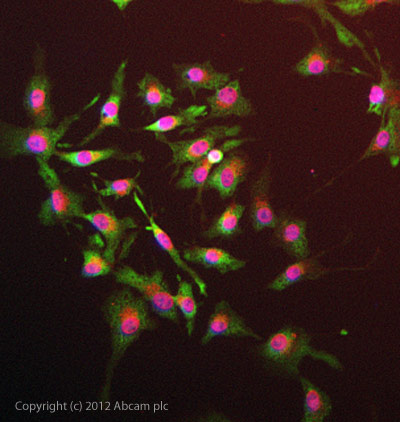Anti-WISP1 antibody
| Name | Anti-WISP1 antibody |
|---|---|
| Supplier | Abcam |
| Catalog | ab10737 |
| Host | Rabbit |
| Clonality | Polyclonal |
| Isotype | IgG |
| Applications | ICC/IF ICC/IF WB IHC-P |
| Species Reactivities | Human |
| Antigen | Synthetic peptide conjugated to KLH derived from within residues 150 to the C-terminus of Human WISP1 |
| Description | Rabbit Polyclonal |
| Gene | WISP1 |
| Conjugate | Unconjugated |
| Supplier Page | Shop |
Product images
Product References
Induction of Wnt-inducible signaling protein-1 correlates with invasive breast - Induction of Wnt-inducible signaling protein-1 correlates with invasive breast
Klinke DJ 2nd. PLoS Comput Biol. 2014 Jan;10(1):e1003409.
WISP-1 contributes to fractionated irradiation-induced radioresistance in - WISP-1 contributes to fractionated irradiation-induced radioresistance in
Li WF, Zhang L, Li HY, Zheng SS, Zhao L. PLoS One. 2014 Apr 11;9(4):e94751.
Role of beta-catenin-regulated CCN matricellular proteins in epithelial repair - Role of beta-catenin-regulated CCN matricellular proteins in epithelial repair
Zemans RL, McClendon J, Aschner Y, Briones N, Young SK, Lau LF, Kahn M, Downey GP. Am J Physiol Lung Cell Mol Physiol. 2013 Mar 15;304(6):L415-27. doi:


